Carmen Ansaldo – 9 September, 2015
Continuing a series of installations in the style that has become her signature, 'Always Humming' was characterised by a centrepiece of the same name involving the suspension of large horizontal panels roughly three metres below the gallery's ceiling. These panels spanned the entire length of the ground floor spaces, and created a new surface that hung above the viewer's head. The wall space between this material and the actual ceiling had been painted a rough, gaudy yellow which, although concealed from the viewer looking up from below, had the effect of backlighting the thin fabric with a subtle glow.
Always Humming was the extensive solo exhibition of New Zealand artist Kate Newby that recently finished at Gertrude Contemporary in Fitzroy. Continuing a series of installations in the style that has become her signature, Always Humming was characterised by a centrepiece of the same name involving the suspension of large horizontal panels roughly three metres below the gallery’s ceiling. These panels spanned the entire length of the ground floor spaces, and created a new surface that hung above the viewer’s head. The wall space between this material and the actual ceiling had been painted a rough, gaudy yellow which, although concealed from the viewer looking up from below, had the effect of backlighting the thin fabric with a subtle glow. This installation was bordered by various ceramic works located in the gallery’s stairwell and second floor studios on one side, and a series of sculptures installed on the top of shopfronts opposite the gallery on the other side of Gertrude Street. New Zealand composer Samuel Holloway collaborated closely with Newby for this show, composing a soundscape that played continuously within the main gallery space.
Newby has enjoyed rapid (and well-deserved) success for her exploration of the understated and often unappreciated materials of our daily lives, stuff that is typically used and discarded without second thought. Often this exploration has led her to install and exhibit sculptures within contexts that extend beyond gallery spaces, in ways which outlive the exhibition timeframes.
Newby‘s intention in this exhibition was to provoke us to look harder, longer and closer at such discarded ephemera in the hope that this reflection would cultivate a new appreciation. What distinguished her exploration from the plethora of other artists working with the same interests was the way she only slightly altered their mainstream usage and/or materiality in order to assert their status as artworks. Previously she had achieved this by attaching specific directives onto objects to control the parameters of audience engagement - through crafting identical copies of selected natural items in dense and highly unlikely materials (such as bronze) or by installing works in spaces which required something of a treasure hunt procedure to be located. These slight readjustments and repurposings created works which were novel and clever, reorganising the space around them subtly, with thoughtful intention and lingering significance.
Sometimes, however, these overlooked aspects were not self-evident, and the gesture of Newby in simply choosing to work with such everyday ephemera failed to attract notice. This was the dilemma in which Always Humming found itself: the installation of the dropped ceiling, the high-pitched buzzing soundscape, the existence of the extra-gallery sculptures did not demonstrate a substantial interrelationship - nor did they command much interest aesthetically when viewed in isolation. Consequently the exhibition failed to convince that such objects warranted either the viewer’s attention or any renewed sense of appreciation.
Part of Newby‘s intention has always been to reject the grandeur of the sculptural object, but when the adjective selected by the gallery to describe the exhibition’s energy was ‘anti-climactic’ it seemed the artist’s concept had started to become lazy in execution. Unfortunately Always Humming was not helped by its accompanying media release which simply asserted that the viewer will be able to ‘see, hear and frame the gallery and its environs in a new way’, through the suspension of the panelling, or the ‘almost imperceptible, perhaps even accidental’, amorphous lumps of glass installed onto the shop rooflines opposite the gallery. These were not quotes to disagree with at face value, but certainly the implicit curatorial assertion that simply the existence of such qualities ensured the exhibition’s success did not stand.
The works that existed outside the gallery were not a new phenomenon, nor was the importance of the extra-gallery contribution self-evident through its status as such. Newby‘s fabric ceiling panels were noticeably marked by signs of weathering, due to their being washed in the ocean and then laid out to dry in the garden of the artist’s mother in New Zealand. Although the viewer was invited to appreciate their changing texture, consistency and colour there was no indication as to why this was done and why it was significant. The wind chime sculpture installed between the first and second floors was poorly executed and not compelling, either in its construction or in its response to its environment, unlike many of Newby’s previous works. Without that interest, the argument that such an installation was significant in and of itself simply fell flat.
Coming from an artist whose concepts have so far proven to be well thought-out, where their rigorous realisation has been propelled by the intimate wonder they initiate, Always Humming felt like an attempt to ride on the success of past endeavours; perhaps Newby’s gruelling international exhibition commitments (particularly during the past three years) was to blame. Irrespective, one can only agree with Gertrude Contemporary that ‘anti-climactic’ is the adjective that appropriately comes to mind.
Carmen Ansaldo
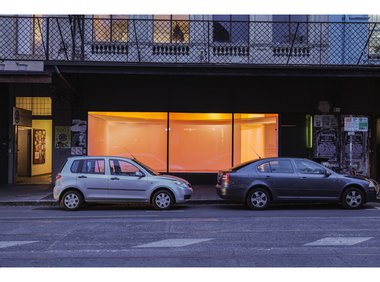
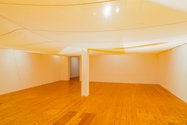
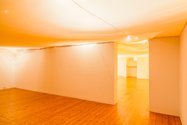
 Advertising in this column
Advertising in this column Two Rooms presents a program of residencies and projects
Two Rooms presents a program of residencies and projects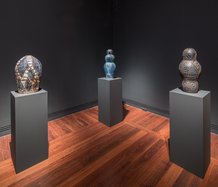


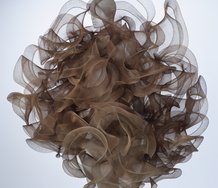
This Discussion has 0 comments.
Comment
Participate
Register to Participate.
Sign in
Sign in to an existing account.